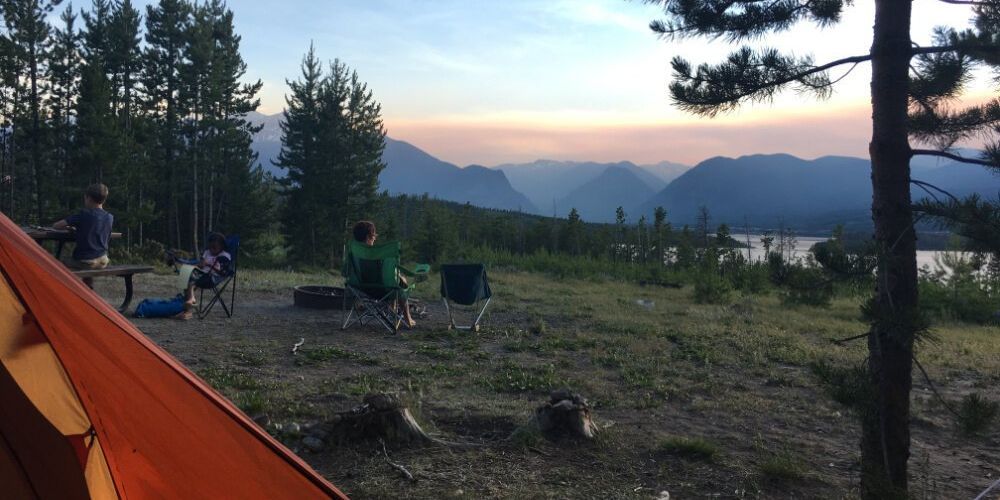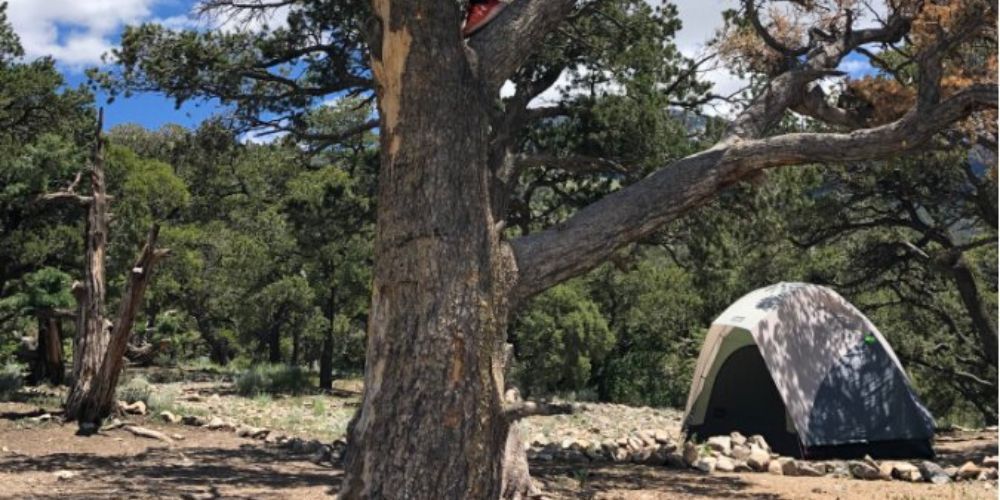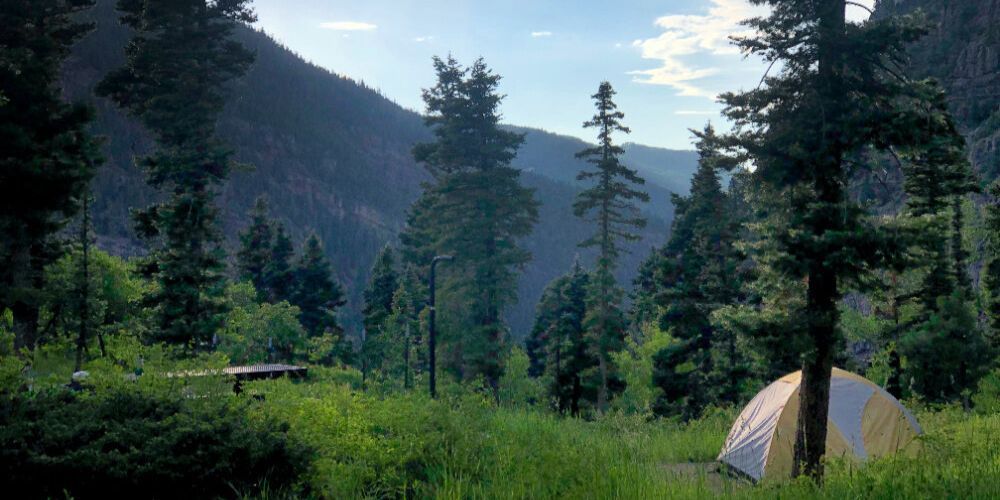The Ultimate Guide to Camping in Colorado: Discover Hidden Gems & Seasonal Wonders
Colorado stands as a paradise for outdoor enthusiasts, offering some of the most breathtaking camping experiences in the United States. From the majestic Rocky Mountains to serene alpine lakes and sprawling meadows dotted with wildflowers, the Centennial State provides an unparalleled backdrop for your camping adventure. Whether you're a seasoned backcountry explorer or a family looking for a memorable weekend getaway, Colorado's diverse landscapes cater to all camping styles and preferences.
This comprehensive guide goes beyond the well-trodden paths of Rocky Mountain National Park and other popular destinations to reveal Colorado's hidden camping treasures. We'll explore lesser-known campgrounds that locals cherish, seasonal highlights that transform the landscape throughout the year, wildlife encounters that will enhance your outdoor experience, and gear recommendations specifically tailored for Colorado's unique environment. So grab your tent, prepare your sense of adventure, and join us as we uncover the ultimate Colorado camping experience.

Hidden Gem Campgrounds in Colorado
While popular destinations like Hammonasset Beach State Park attract crowds, Connecticut has several lesser-known camping treasures waiting to be discovered:
Pachaug State Forest (Voluntown)
Connecticut's largest state forest offers primitive camping at the secluded Mount Misery Campground. With over 24,000 acres of wilderness, hikers and mountain bikers can explore an extensive trail network while anglers enjoy fishing in the Pachaug River. The remote location makes it perfect for stargazing and truly disconnecting.
Macedonia Brook State Park (Kent)
Tucked away in the picturesque town of Kent, this hidden gem offers tent camping with stunning views of the Taconic Mountains. The challenging Blue Trail rewards hikers with panoramic vistas of the Catskills and Taconics. With only 51 sites spread across a wooded setting, Macedonia Brook provides the intimate camping experience that larger parks can't match.
Salt Rock Campground (Baltic)
This well-maintained but often overlooked campground in Sprague offers tranquil sites along the Shetucket River. Popular with paddlers and anglers, Salt Rock provides a peaceful basecamp for exploring eastern Connecticut's Quiet Corner. The relatively flat terrain makes it ideal for families with young children.
Lake Waramaug State Park (Kent)
While not entirely unknown, Lake Waramaug remains less crowded than many Connecticut camping destinations. The lakeside campsites offer some of the most scenic water views in the state, and the surrounding area features charming New England towns, vineyards, and farm stands perfect for gathering fresh local ingredients for campfire meals.
American Legion and Peoples State Forests (Barkhamsted)
These twin forests offer primitive camping along the scenic Farmington River. The area is known for excellent fly fishing, hiking trails with spectacular views, and fascinating CCC-era stone structures. The Barkhamsted Lighthouse site adds historical intrigue to camping trips here.
Housatonic Meadows State Park (Sharon)
This small riverside campground along the Housatonic River offers peaceful sites surrounded by pine trees. Popular with fly fishers targeting the river's trout population, the park also provides access to the Appalachian Trail for day hikers looking for adventure.
Seasonal Camping Highlights
Colorado's camping experience transforms dramatically with each season, offering unique natural spectacles and recreational opportunities throughout the year.
Spring (Late April to Early June)
Spring camping in Colorado introduces the first wildflower blooms, particularly in lower elevations and western regions. The Arkansas River Valley and areas around Durango burst with wildflowers by late May. This shoulder season offers smaller crowds and the excitement of rushing rivers fueled by snowmelt. However, be prepared for unpredictable weather and potentially muddy conditions at higher elevations where snow may still be melting.
Best For: Wildflower photography, bird watching, and whitewater rafting enthusiasts who enjoy the higher water levels.
Summer (Late June to Early September)
Summer represents peak camping season in Colorado, with alpine areas finally accessible after winter snows retreat. High-elevation destinations like Ice Lake Basin, American Basin, and the Four Pass Loop around Aspen come alive with vibrant wildflower displays, particularly in July. Summer offers the most reliable weather, though afternoon thunderstorms are common and should factor into your hiking plans.
Best For: High alpine adventures, wildflower viewing (especially mid-July), and access to the highest elevation campgrounds and trails.
Fall (Mid-September to Mid-October)
Fall transforms Colorado's landscapes with a spectacular aspen gold rush. The southwestern San Juan Mountains typically show colors first, followed by central regions like Kebler Pass near Crested Butte (home to one of the largest aspen groves in the world). Fall camping brings crisp, clear days, cool nights, and fewer insects. Wildlife becomes more active as animals prepare for winter.
Best For: Fall foliage photography, wildlife viewing, and enjoying uncrowded campgrounds after the summer rush.
Winter (November to Early April)
Winter camping in Colorado provides a serene, snow-covered experience for the well-prepared adventurer. Lower elevation areas like those around Fruita, Colorado National Monument, and Dinosaur National Monument offer milder winter camping. For the truly adventurous, yurt systems and winter hut networks provide unique backcountry accommodations.
Best For: Solitude seekers, winter sports enthusiasts, and stargazing (winter offers the clearest night skies).
Local Wildlife to Watch For
Colorado's diverse ecosystems support an abundant array of wildlife that enhances the camping experience while requiring appropriate awareness and safety measures.
Mammals
- Elk: Most commonly spotted at dawn and dusk in mountain meadows and forest edges. Fall brings the dramatic bugling season as bulls compete for mates.
- Moose: Increasingly common in riparian areas throughout northern and central Colorado, particularly around Grand Lake, State Forest State Park, and the Upper Rio Grande region.
- Bighorn Sheep: Colorado's state animal can be observed on rocky slopes in areas like Georgetown, Pikes Peak, and the Arkansas River canyon.
- Black Bears: Present throughout Colorado's forests, requiring proper food storage (bear canisters or hanging methods). Most active in late summer and fall before hibernation.
- Mountain Lions: Rarely seen but present throughout the state, particularly in areas with healthy deer populations.
- Marmots: These charismatic high-elevation residents are commonly spotted sunning themselves on rocks above 10,000 feet.
Birds
- Ospreys and Bald Eagles: Frequently seen near lakes and rivers, particularly at Crawford State Park, Blue Mesa Reservoir, and along the Colorado River.
- Ptarmigans: Well-camouflaged alpine birds found above treeline, changing color seasonally from brown in summer to white in winter.
- Stellar's Jays: These bold, blue-crested birds often frequent campgrounds seeking food scraps (though feeding wildlife is discouraged).
Safety Considerations
- Store food properly in bear-resistant containers or hanging food bags at least 10 feet high and 4 feet from any vertical support.
- Keep a respectful distance from all wildlife, using binoculars or telephoto lenses for closer observation.
- Moose can be particularly dangerous when surprised or with calves; give them extra space.
- Avoid camping in areas with fresh bear activity (tracks, scat, tree scratches).
Best Water-Based Campsites for Swimming, Paddling, and Fishing
Colorado may be known for its mountains, but its lakes, rivers, and reservoirs offer exceptional water-based camping opportunities.
Turquoise Lake, Leadville
This stunning mountain lake features several campgrounds with sites near the shoreline. Known for excellent trout fishing, the lake also allows non-motorized boating and swimming from several small beaches. The surrounding mountains, including the prominent Mount Massive, create a dramatic backdrop.
Ridgway State Park, Western Slope
Offering some of Colorado's most developed waterfront camping, Ridgway's three campgrounds include hot showers, electrical hookups, and yurts for rent. The park's 5-mile-long reservoir provides swimming beaches, exceptional trout fishing, and a wakeless zone for peaceful paddling.
Arkansas Headwaters Recreation Area
For river enthusiasts, the campgrounds along the Arkansas River between Buena Vista and Cañon City offer immediate access to world-class whitewater rafting and kayaking. Five Point Campground and Hecla Junction provide tent sites within earshot of the rushing river and excellent fishing access.
Steamboat Lake State Park
Located north of Steamboat Springs, this park offers 188 campsites with many along the lakeshore. With Hahn's Peak as a backdrop, the scenic lake provides excellent trout fishing, two swim beaches, and boat rentals during summer months.
Crawford State Park, Western Colorado
This lesser-known state park features lakeside camping with views of the imposing Needle Rock and West Elk Mountains. The 400-acre reservoir offers excellent fishing for perch and trout, no-wake paddling opportunities, and swimming from small beaches.

Camping with a Cultural Twist: Historic or Unique Local Attractions
Enhance your Colorado camping experience by exploring nearby historical and cultural sites that tell the story of the state's rich heritage.
Ancient Pathways: Mesa Verde Region
Camp at Morefield Campground or the lesser-known McPhee Reservoir sites to explore the ancient Puebloan dwellings of Mesa Verde National Park. Extend your cultural exploration by visiting Hovenweep National Monument and Canyons of the Ancients, which contain some of the highest concentrations of archaeological sites in North America.
Mining History: Clear Creek Canyon
Campsites near Idaho Springs and Georgetown place you in the heart of Colorado's gold rush history. Take a tour of the Phoenix Gold Mine, ride the Georgetown Loop Railroad, or explore ghost towns like Central City between camping adventures.
Native American Heritage: Ute Mountain Tribal Park
For a profound cultural experience, camp near the town of Towaoc and arrange a guided tour of Ute Mountain Tribal Park. Unlike more developed archaeological sites, these tours led by Ute guides offer insight into living Native traditions and remarkably preserved ancestral Puebloan sites.
Dinosaur Discoveries: Western Colorado
Camp at Echo Park in Dinosaur National Monument for a unique blend of dramatic geology, river access, and paleontological wonders. Nearby, you can visit active dinosaur excavation sites and the world-class Museums of Western Colorado in Grand Junction.
Railroad Legacy: Phantom Canyon Road
Camp along the Arkansas River near Cañon City, then take a scenic drive up Phantom Canyon Road, following the historic Florence and Cripple Creek Railroad grade. The journey reveals numerous mining relics, tunnels, and historic trestles amidst spectacular canyon scenery.

Colorado Campfire Cooking: Regional Dishes and Tips
Elevate your camping cuisine with these Colorado-inspired outdoor recipes and cooking tips that celebrate local flavors and ingredients.
Rocky Mountain Trout
Colorado's abundant streams and lakes make fresh trout a camping staple. For a local twist:
- Clean your freshly caught trout, leaving the skin on.
- Stuff the cavity with sliced lemon, fresh sprigs of wild thyme (found throughout Colorado mountains), and thin slices of foraged wild onion.
- Wrap in foil with a splash of bourbon (Colorado is home to several excellent distilleries).
- Cook over campfire coals for approximately 10 minutes, depending on size.
Green Chile Camp Stew
Drawing from Colorado's southwestern influences:
- Brown ground bison (a sustainable alternative to beef) in a cast-iron Dutch oven.
- Add diced onions, Pueblo green chiles (bring some frozen or canned), potatoes, corn, and pinto beans.
- Season with cumin, oregano, and garlic.
- Simmer until potatoes are tender and serve with tortillas.
Foraged Foods
- Seek out wild raspberries and strawberries in mid to late summer, particularly in forest clearings above 8,000 feet.
- Learn to identify porcini mushrooms, which appear in Colorado's mountains after summer rains (consult an expert field guide or join a guided foraging tour).
High-Altitude Cooking Tips
- Water boils at lower temperatures at elevation (approximately 194°F at 10,000 feet), requiring longer cooking times for pasta, rice, and beans.
- Pre-soak beans before your trip to reduce cooking time.
- Bring a pressure cooker for high-elevation camping to significantly reduce cooking times and conserve fuel.
- Adjust recipes requiring baking powder or yeast, as leavening agents work more quickly at altitude.
Local Events Near Campgrounds
Plan your Colorado camping trip around these unique local events for an enhanced outdoor experience.
FIBArk Whitewater Festival (June, Salida)
America's oldest whitewater festival takes place along the Arkansas River. Camp at nearby Angel of Shavano or Hayden Creek campgrounds and enjoy kayak races, raft competitions, live music, and a festive atmosphere in downtown Salida.
Crested Butte Wildflower Festival (July)
Camp at Lake Irwin or Oh Be Joyful while participating in guided wildflower hikes, photography workshops, and art classes during the peak of alpine blooming season.
Telluride Mushroom Festival (August)
Campers at nearby Alta Lakes or Sunshine Campground can participate in foraging expeditions, cooking demonstrations, and scientific presentations celebrating Colorado's fungal diversity.
Meeker Sheepdog Trials (September)
Camp along the White River at sites like Meadow Lake or South Fork, then witness this fascinating competition where highly trained dogs herd sheep through complex courses, demonstrating a centuries-old working partnership.
Fruita Fall Festival (September)
Camp in nearby Colorado National Monument or along the Colorado River, then enjoy this celebration of harvest season featuring mountain bike competitions, live music, and local agricultural bounty.
Gear Recommendations
Colorado's diverse environments and variable conditions require thoughtful gear selection to ensure safety and comfort.
Essential Colorado Gear
- Elevation-appropriate sleeping bag: Even summer nights can drop below freezing at higher elevations. Choose a bag rated at least 20°F for summer and 0°F or lower for spring/fall.
- Quality rain gear: Colorado's notorious afternoon thunderstorms require waterproof (not water-resistant) jackets and pants, particularly in summer months.
- Sun protection: The thin atmosphere at elevation allows more UV radiation. Pack high-SPF sunscreen, sunglasses with UV protection, and a wide-brimmed hat.
- Layering system: Temperature swings of 30-40 degrees within 24 hours are common. Pack moisture-wicking base layers, insulating mid-layers, and waterproof/windproof outer layers.
- Bear-resistant food storage: Required in many areas, these containers protect your food and keep wildlife safe by preventing habituation.
Regional Considerations
- Western Slope Desert Camping: Add a shade structure, extra water containers, and cooling towels for hot, dry conditions around Fruita, Grand Junction, and southwestern regions.
- Alpine Camping: Bring extra guy lines and sturdy stakes for tents to withstand high winds above treeline, plus trekking poles for stream crossings during snowmelt season.
- Mosquito Season Preparedness: For early summer camping, particularly near lakes and streams, pack head nets, permethrin-treated clothing, and enclosed tents with intact mesh.
Tech and Navigation
- Offline navigation tools: Cell service is unreliable in many Colorado camping areas. Download offline maps through apps like OnX, Gaia GPS, or Colorado Trail Explorer before your trip.
- Portable power bank: Cold temperatures drain batteries quickly; store your power bank in your sleeping bag at night.
- Personal locator beacon: For remote backcountry camping, these devices can be lifesaving in emergency situations where no cell service exists.
Seasonal Additions
- Spring: Pack microspikes for hiking and extra waterproof bags for muddy conditions.
- Summer: Lightning detection device for timely warnings during thunderstorm season.
- Fall: Extra insulation layers for unexpectedly cold nights and thermal sleeping pad.
- Winter: Four-season tent, snow shovel, and avalanche safety equipment if camping in avalanche terrain.
Colorado offers a camping experience like no other, with its diverse landscapes, abundant wildlife, and rich cultural heritage providing endless opportunities for outdoor adventure. From the hidden gems of the San Juan Mountains to the tranquil shores of lesser-known lakes, the Centennial State rewards those willing to venture beyond the familiar paths. By considering seasonal variations, preparing with appropriate gear, and integrating local events and attractions into your itinerary, you'll discover the true essence of Colorado's outdoor splendor. So pack your tent, embrace the spirit of exploration, and create memories against the backdrop of America's most magnificent mountain scenery.
Whether you're a seasoned backcountry enthusiast or planning your first family camping trip, Colorado's natural treasures await. Just remember to practice Leave No Trace principles, respect wildlife, and preserve these special places for future generations of adventurers.
Author: William Flaiz
